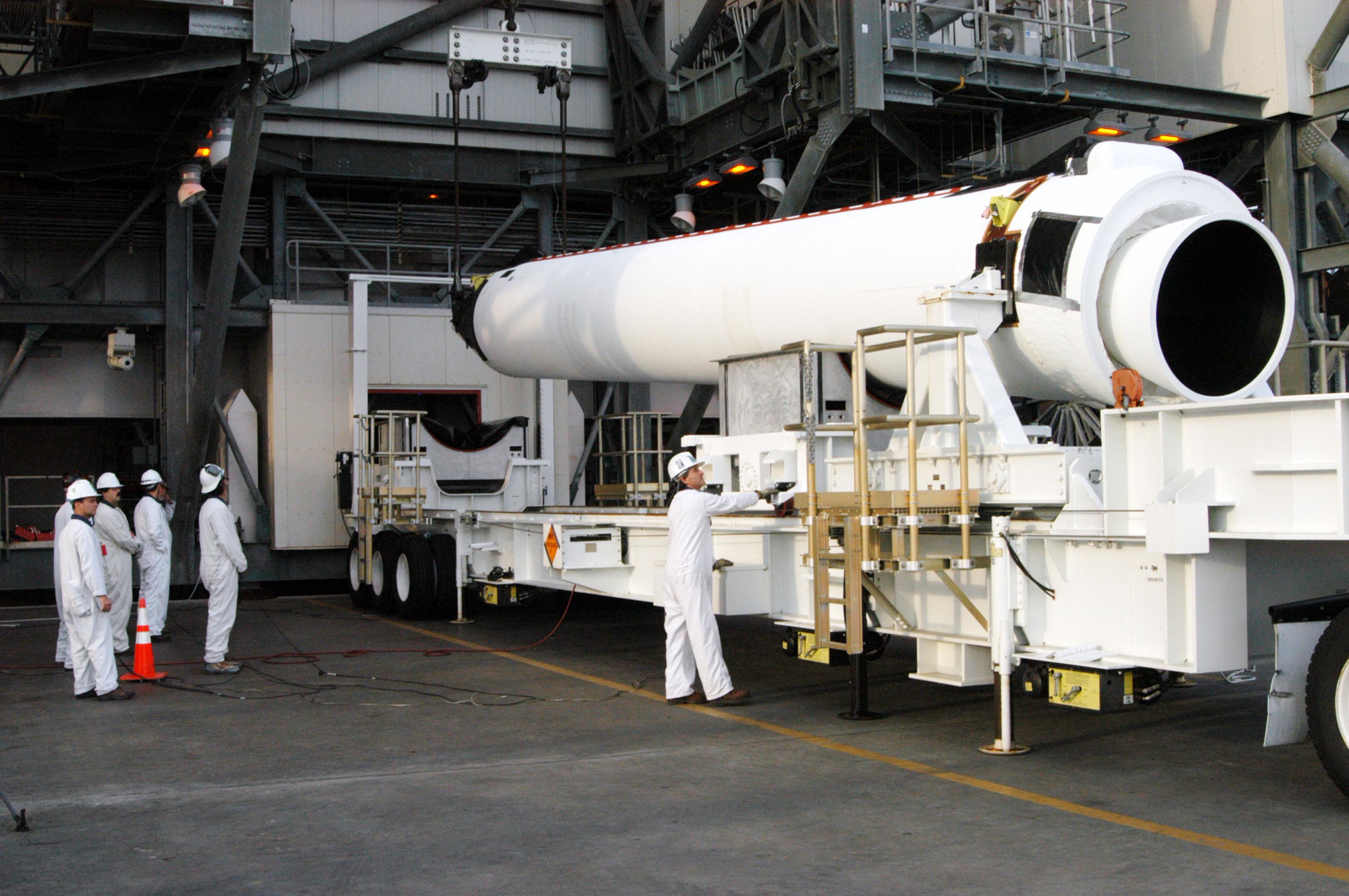|
GPS IIR-1
GPS IIR-1 or GPS SVN-42 was the first Block IIR GPS satellite to be launched. It was to have been operated as part of the United States Air Force Global Positioning System. It was launched on 17 January 1997, and was destroyed 13 seconds into its flight due to a malfunction of the Delta II launch vehicle that was carrying it. It was estimated to have cost US$40 million, with its launch vehicle costing US$55 million. The satellite that was used for the GPS IIR-1 mission was the second production IIR satellite, SVN-42. Launch GPS IIR-1 was launched on a Delta II 7925-9.5 launch vehicle, serial number D241, from Launch Complex 17A (LC-17A) at the Cape Canaveral Air Force Station (CCAFS). The launch occurred at 16:28:01 UTC, on 17 January 1997. Thirteen seconds later, the rocket's flight termination system was activated by its onboard computer. This detonated explosive charges aboard the rocket, causing it to explode. At the time of explosion, the rocket was above the launc ... [...More Info...] [...Related Items...] OR: [Wikipedia] [Google] [Baidu] |
Navigation Satellite
A satellite navigation or satnav system is a system that uses satellites to provide autonomous geo-spatial positioning. It allows satellite navigation devices to determine their location (longitude, latitude, and altitude/elevation) to high precision (within a few centimetres to metres) using time signals transmitted along a line of sight by radio from satellites. The system can be used for providing position, navigation or for tracking the position of something fitted with a receiver (satellite tracking). The signals also allow the electronic receiver to calculate the current local time to a high precision, which allows time synchronisation. These uses are collectively known as Positioning, Navigation and Timing (PNT). One set of critical vulnerabilities in satellite communications are the signals that govern positioning, navigation and timing (PNT). Failure to properly secure these transmissions could not only disrupt satellite networks but wreak havoc on a host of dependent sy ... [...More Info...] [...Related Items...] OR: [Wikipedia] [Google] [Baidu] |
Launch Vehicle
A launch vehicle or carrier rocket is a rocket designed to carry a payload ( spacecraft or satellites) from the Earth's surface to outer space. Most launch vehicles operate from a launch pads, supported by a launch control center and systems such as vehicle assembly and fueling. Launch vehicles are engineered with advanced aerodynamics and technologies, which contribute to large operating costs. An orbital launch vehicle must lift its payload at least to the boundary of space, approximately and accelerate it to a horizontal velocity of at least . Suborbital vehicles launch their payloads to lower velocity or are launched at elevation angles greater than horizontal. Practical orbital launch vehicles are multistage rockets which use chemical propellants such as solid fuel, liquid hydrogen, kerosene, liquid oxygen, or Hypergolic propellants. Launch vehicles are classified by their orbital payload capacity, ranging from small-, medium-, heavy- to super-heavy ... [...More Info...] [...Related Items...] OR: [Wikipedia] [Google] [Baidu] |
Koreasat 1
Koreasat 1 was a South Korean communications satellite launched by a Delta II rocket from Cape Canaveral Air Force Station, Florida, United States. Owned by KT Corporation. One of the boosters of the Delta II rocket failed to separate from the first stage of the spacecraft, placing it 5,000 km short of its planned GTO apogee. The satellite had to use up 7.5 years worth of its 12-year lifetime fuel supply to make up the deficiency, shortening Koreasat 1's expected life to about 4.5 years. In order to extend its lifetime, it gave up north–south station-keeping operating in "inclined mode." In the end, the satellite managed to function for 10 years. The satellite was equipped with a Star 30 solid apogee motor. It carried of fuel for the apogee motor and of hydrazine propellant. It was eventually positioned in geosynchronous orbit at 116° E operated it at 47.5° E where it was focused on Hungary. The satellite went out of service on December 16, 2005, and was moved to the ... [...More Info...] [...Related Items...] OR: [Wikipedia] [Google] [Baidu] |
Vandenberg Space Launch Complex 2
Space Launch Complex 2 (SLC-2) is an active rocket launch site at Vandenberg Space Force Base, in California, USA. It consists of two launch pads. The East pad (SLC-2E, originally LC 75-1-1) was used for Delta, Thor-Agena and Thorad launches between 1966 and 1972 and has been demolished. The West pad (SLC-2W, originally LC 75-1-2) was used for Delta, Thor-Agena and Delta II launches from 1966 until 2018, when the Delta II performed its last flight. SLC-2W has been repurposed to launch Firefly Alpha for Firefly Aerospace Firefly Aerospace is an American private aerospace firm based in Austin, Texas, that develops launch vehicles for commercial launches to orbit. The company completed its $75 million Series A investment round in May 2021, which was led by DADA ... and on October 15, 2020 the Delta II mobile service tower suffered a fire during demolition. The maiden flight of Firefly Alpha took place on September 3, 2021 and resulted in a flight failure. The second flight ... [...More Info...] [...Related Items...] OR: [Wikipedia] [Google] [Baidu] |
Vandenberg Air Force Base
Vandenberg may refer to: * Vandenberg (surname), including a list of people with the name * USNS ''General Hoyt S. Vandenberg'' (T-AGM-10), transport ship in the United States Navy, sank as an artificial reef in Key West, Florida * Vandenberg Space Force Base, a United States military installation with a spaceport * Vandenberg (band), a Dutch hard rock band ** ''Vandenberg'' (album), their 1982 debut album * Vandenberg resolution, a United States Congress resolution passed in 1948 {{disambig ... [...More Info...] [...Related Items...] OR: [Wikipedia] [Google] [Baidu] |
Air Force Space And Missile Museum
The Air Force Space and Missile Museum is located at Launch Complex 26 at Cape Canaveral Space Force Station, Florida. It includes artifacts from the early American space program and includes an outdoor area displaying rockets, missiles, and space-related equipment chronicling the space and missile history of the US Air Force, the US Space Force and other military branches. The museum is accessible to the public as a part of the "Cape Canaveral Early Space Tour" offered by the Kennedy Space Center Visitor Complex four days per week. Free tours were also offered by the former Air Force 45th Space Wing Community Relations office until June 2013. The 45th Space Wing became Space Launch Delta 45 in May 2021 following establishment of the Space Force. The Sands Space History Center, a companion to the museum, is open to the general public six days a week. The History Center is located just outside the south gate of Cape Canaveral Air Force Station. Sands Space History Center Th ... [...More Info...] [...Related Items...] OR: [Wikipedia] [Google] [Baidu] |
Blockhouse
A blockhouse is a small fortification, usually consisting of one or more rooms with loopholes, allowing its defenders to fire in various directions. It is usually an isolated fort in the form of a single building, serving as a defensive strong point against any enemy that does not possess siege equipment or, in modern times, artillery, air force and cruise missiles. A fortification intended to resist these weapons is more likely to qualify as a fortress or a redoubt, or in modern times, be an underground bunker. However, a blockhouse may also refer to a room within a larger fortification, usually a battery or redoubt. Etymology The term ''blockhouse'' is of uncertain origin, perhaps related to Middle Dutch ''blokhus'' and 18th-century French '' blocus'' (blockade). In ancient Greece Blockhouses existed in ancient Greece, for example the one near Mycenae. Early blockhouses in England Early blockhouses were designed solely to protect a particular area by the use of ar ... [...More Info...] [...Related Items...] OR: [Wikipedia] [Google] [Baidu] |
Atlantic Ocean
The Atlantic Ocean is the second-largest of the world's five oceans, with an area of about . It covers approximately 20% of Earth's surface and about 29% of its water surface area. It is known to separate the " Old World" of Africa, Europe and Asia from the "New World The term ''New World'' is often used to mean the majority of Earth's Western Hemisphere, specifically the Americas."America." ''The Oxford Companion to the English Language'' (). McArthur, Tom, ed., 1992. New York: Oxford University Press, p. ..." of the Americas in the European perception of Earth, the World. The Atlantic Ocean occupies an elongated, S-shaped basin extending longitudinally between Europe and Africa to the east, and North America, North and South America to the west. As one component of the interconnected World Ocean, it is connected in the north to the Arctic Ocean, to the Pacific Ocean in the southwest, the Indian Ocean in the southeast, and the Southern Ocean in the south (other ... [...More Info...] [...Related Items...] OR: [Wikipedia] [Google] [Baidu] |
Solid Rocket Booster
A solid rocket booster (SRB) is a large solid propellant motor used to provide thrust in spacecraft launches from initial launch through the first ascent. Many launch vehicles, including the Atlas V, SLS and space shuttle, have used SRBs to give launch vehicles much of the thrust required to place the vehicle into orbit. The space shuttle used two space shuttle SRBs, which were the largest solid propellant motors ever built and the first designed for recovery and reuse. The propellant for each solid rocket motor on the space shuttle weighed approximately 500,000 kilograms.. Advantages Compared to liquid propellant rockets, the solid-propellant motors SRMs have been capable of providing large amounts of thrust with a relatively simple design. They provide greater thrust without significant refrigeration and insulation requirements, and produce large amounts of thrust for their size. Adding detachable SRBs to a vehicle also powered by liquid-propelled rockets known as stagin ... [...More Info...] [...Related Items...] OR: [Wikipedia] [Google] [Baidu] |
Solid-propellant Rocket
A solid-propellant rocket or solid rocket is a rocket with a rocket engine that uses solid propellants ( fuel/oxidizer). The earliest rockets were solid-fuel rockets powered by gunpowder; they were used in warfare by the Arabs, Chinese, Persians, Mongols, and Indians as early as the 13th century. All rockets used some form of solid or powdered propellant up until the 20th century, when liquid-propellant rockets offered more efficient and controllable alternatives. Solid rockets are still used today in military armaments worldwide, model rockets, solid rocket boosters and on larger applications for their simplicity and reliability. Since solid-fuel rockets can remain in storage for an extended period without much propellant degradation and because they almost always launch reliably, they have been frequently used in military applications such as missiles. The lower performance of solid propellants (as compared to liquids) does not favor their use as primary propulsion in mo ... [...More Info...] [...Related Items...] OR: [Wikipedia] [Google] [Baidu] |
Graphite-Epoxy Motor
The Graphite-Epoxy Motor (GEM) is a family of solid rocket boosters first developed in the late 1980s and used from 1990 to the present day. GEM motors are manufactured with carbon-fibre-reinforced polymer casings and a fuel consisting of HTPB-bound ammonium perchlorate composite propellant. GEM is currently produced by Northrop Grumman Space Systems. GEM boosters were previously used on the Delta II, Delta III, and Delta IV launch vehicles, and are currently used on the Atlas V. A new variant, the GEM 63XL, is slated to fly as part of the Vulcan Centaur launch vehicle no earlier than the 1st quarter of 2023. Variants Active GEM 63 The GEM 63 was developed by Orbital ATK as a low-cost drop-in replacement for the Aerojet Rocketdyne AJ-60A solid rocket booster used on the Atlas V. Its overall dimensions are very similar to that of the motor it replaces. The Atlas V first flew with the GEM 63 in 2020 on the NROL-101 launch. The booster offers higher performance at about half ... [...More Info...] [...Related Items...] OR: [Wikipedia] [Google] [Baidu] |
List Of Atlas Launches (1960–1969)
Launch statistics Rocket configurations Launch sites Launch outcomes 1960 1961 1962 1963 1964 1965 1966 1967 1968 1969 References * * * * Main Page * List of Atlas launches {{DEFAULTSORT:List of Atlas launches (1960-69) Atlas An atlas is a collection of maps; it is typically a bundle of maps of Earth or of a region of Earth. Atlases have traditionally been bound into book form, but today many atlases are in multimedia formats. In addition to presenting geogra ... * ... [...More Info...] [...Related Items...] OR: [Wikipedia] [Google] [Baidu] |







